How to make room and linen spray
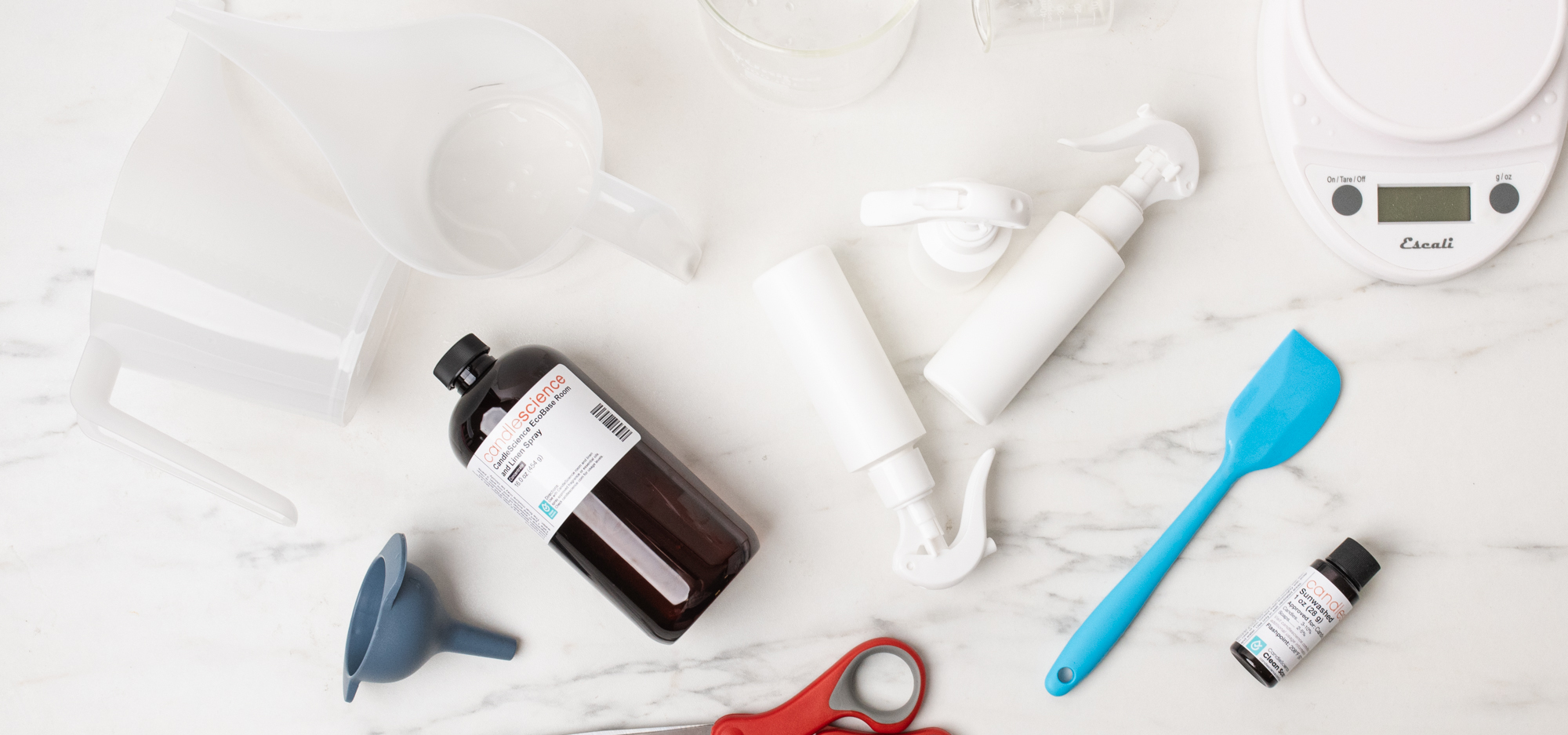
The scent of a room is one of the first things you notice when entering a new space. And while candles, wax melts, and reed diffusers are great ways to set the mood with scent, there’s one option that’s faster, easier, more versatile, and often overlooked: room and linen sprays!
Room and linen sprays allow you to quickly fragrance your surroundings by spraying the air, blankets, sheets, fabric furniture, rugs, clothing, or other types of fabric. This is especially useful when you’re entertaining company on short notice, wanting to set the atmosphere of a room quickly, or just don’t have the time to wait for wax melts or candles to throw scent.
In this tutorial, you’ll learn how to make custom room and linen spray. If you’ve looked into making DIY room and linen spray before, you may have seen recipes that include rubbing alcohol or witch hazel and a bunch of complex-sounding emulsifiers and preservatives.
But this tutorial is refreshingly simple. The only ingredients you’ll need are CandleScience EcoBase Room and Linen Spray, water, and fragrance or essential oil. No tricky math, extra emulsifiers, or head-scratching is required! We did the math for you, so there’s no need to break out your calculator for this one.
Things to note before you get started:
- The ingredients in this tutorial are all liquid, but be sure to weigh them on a scale.
- If you're selling your finished product, you must label your bottles using using fluid ounces (fl oz) and milliliters (mL). We recommend using the measurements on our funnel pouring pitcher.
- We formulated our base without water to help keep shipping costs and your overall cost of goods (COGs) low.
- The color of the fragrance or essential oil may affect the final color of the room and linen spray solution.
We recommend a 5% fragrance or essential oil load for this project. The final solution was cohesive at a 5% fragrance load with no signs of separation; however, there is a risk of your solution separating as you approach or surpass a 10% load. Don’t forget to check for separation and patch test linens, especially if you use more than a 5% fragrance load.
Essential oils can be a little trickier than fragrance oils. We recommend that you tell your customers to shake the finished spray to ensure oils are well mixed before each use. Our room spray base contains a solubilizer, but this is good practice for all room and linen spray labels.
We'll be using the 4 oz. Matte White HDPE Bottles, which have a recommended fill weight of 118 grams. For six bottles, you'll need 708 g of the finished solution.
To learn to calculate your own room and linen spray batch size, see A Beginner’s Guide to Scaling Room and Linen Spray or check out our CandleScience EcoBase Room and Linen Spray Calculator!
Additional items needed:
- Distilled or tap water
- Fragrance or essential oil safe glass container
- Whisk or spatula
- Scissors
- Paper towels
- Supplies should not be re-used for food prep.
- Be sure to use glass containers with fragrance or essential oil; the oil can eat through paper and some plastics.
Directions:
Step 1: Prepare supplies and work space
Wash your equipment and utensils in warm soapy water and dry thoroughly. Don’t forget your workspace! Avoid any cross-contamination by spraying the area with rubbing alcohol or a 5% bleach solution, then wipe dry with a clean paper towel.
Step 2: Adjust sprayer tube length
The White Fine Mist Sprayer (24mm-410) fits various bottle sizes. To adjust, hold the sprayer flush with the bottle top and cut the tube at an angle, slightly longer than the bottle height. Repeat this with every sprayer and set aside.
Avoid cutting the tube so that it fits flush with the bottle; this may lead to the spray bottle clogging.
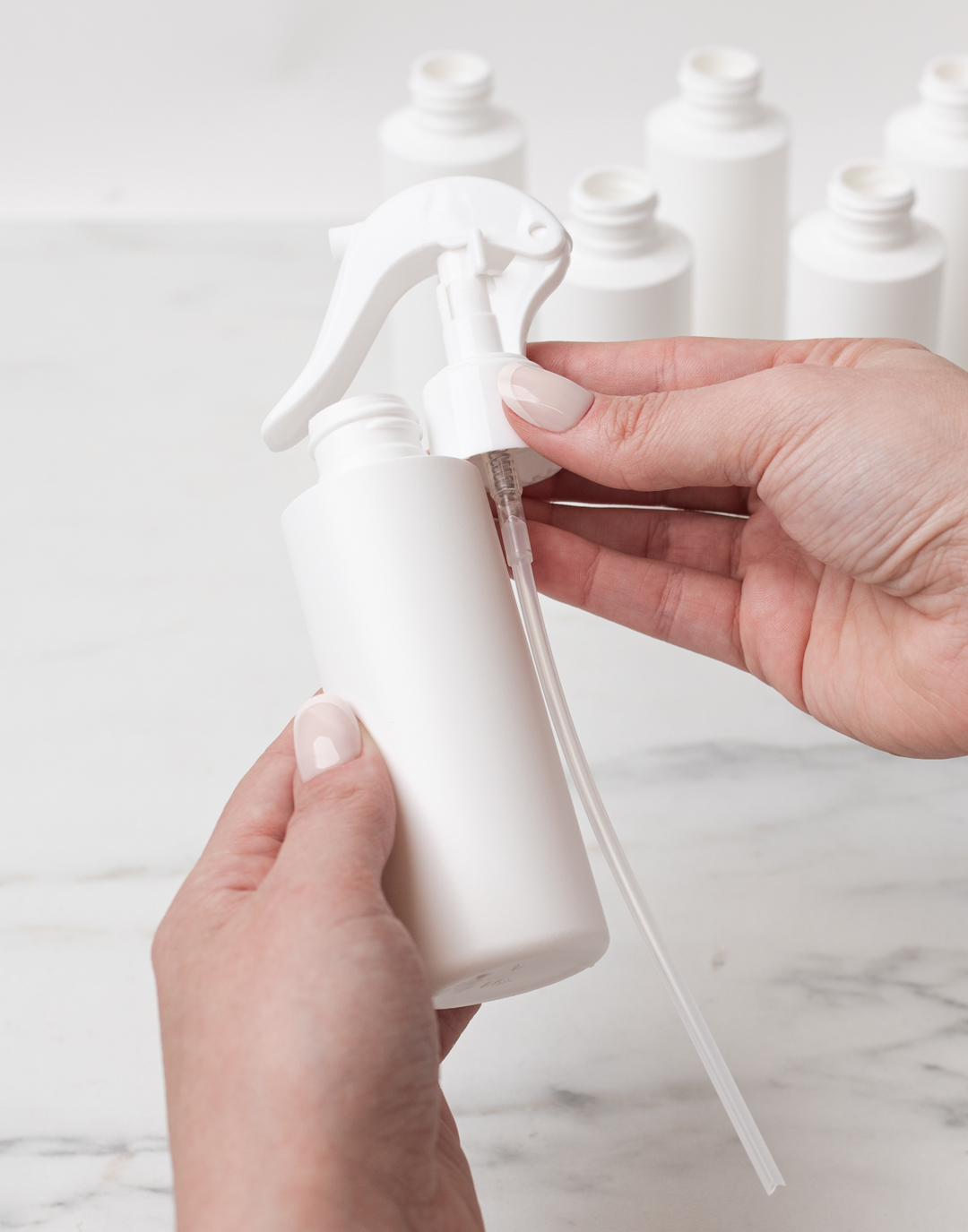

Step 3: Weigh room spray base
Place a clean funnel pouring pitcher on your scale and press tare. Weigh 142 g of concentrated room and linen spray base. Set aside.
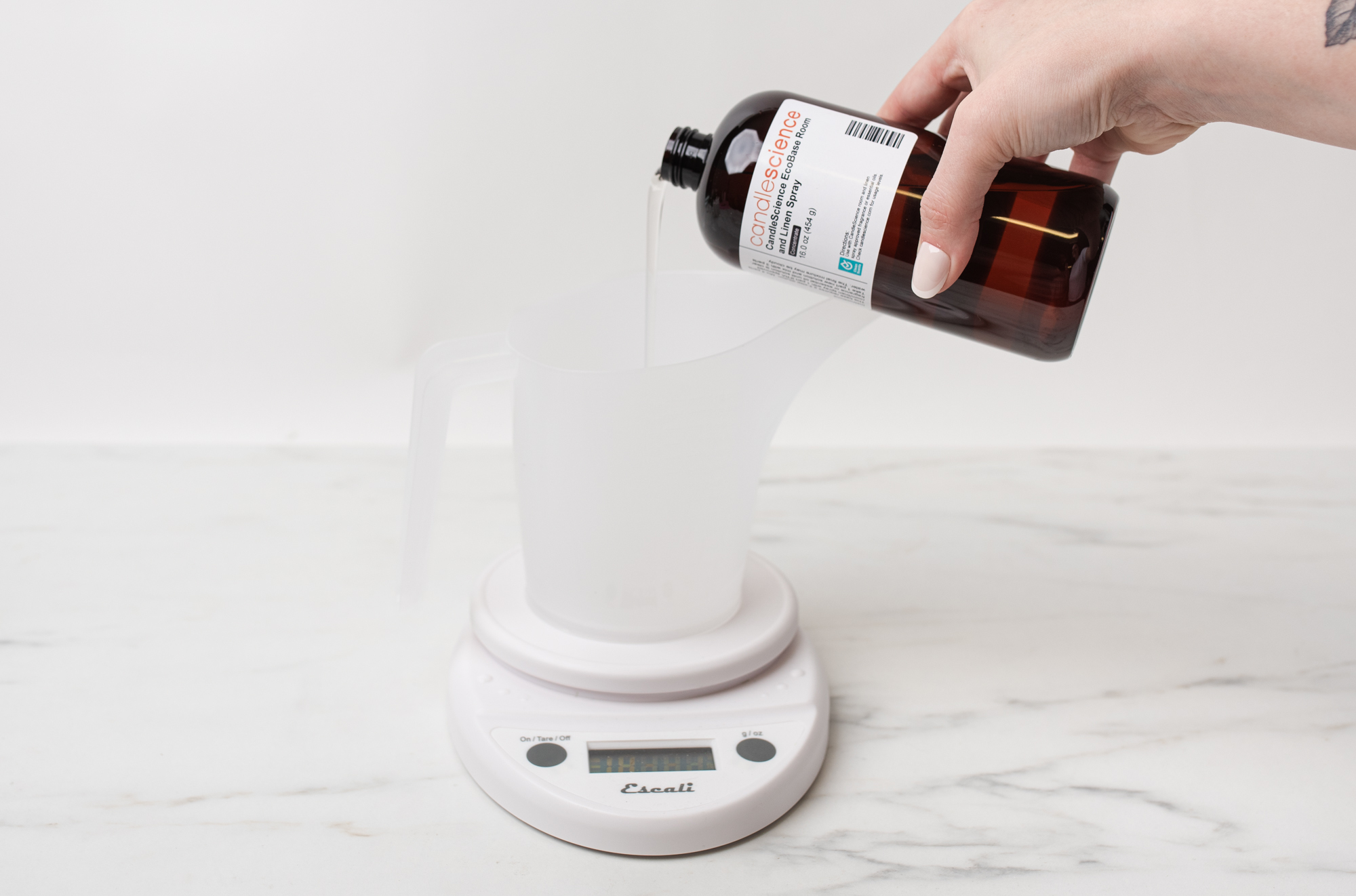

Step 4: Weigh fragrance oil
Place a clean glass beaker on your scale and press tare. Weigh 35 g of fragrance.
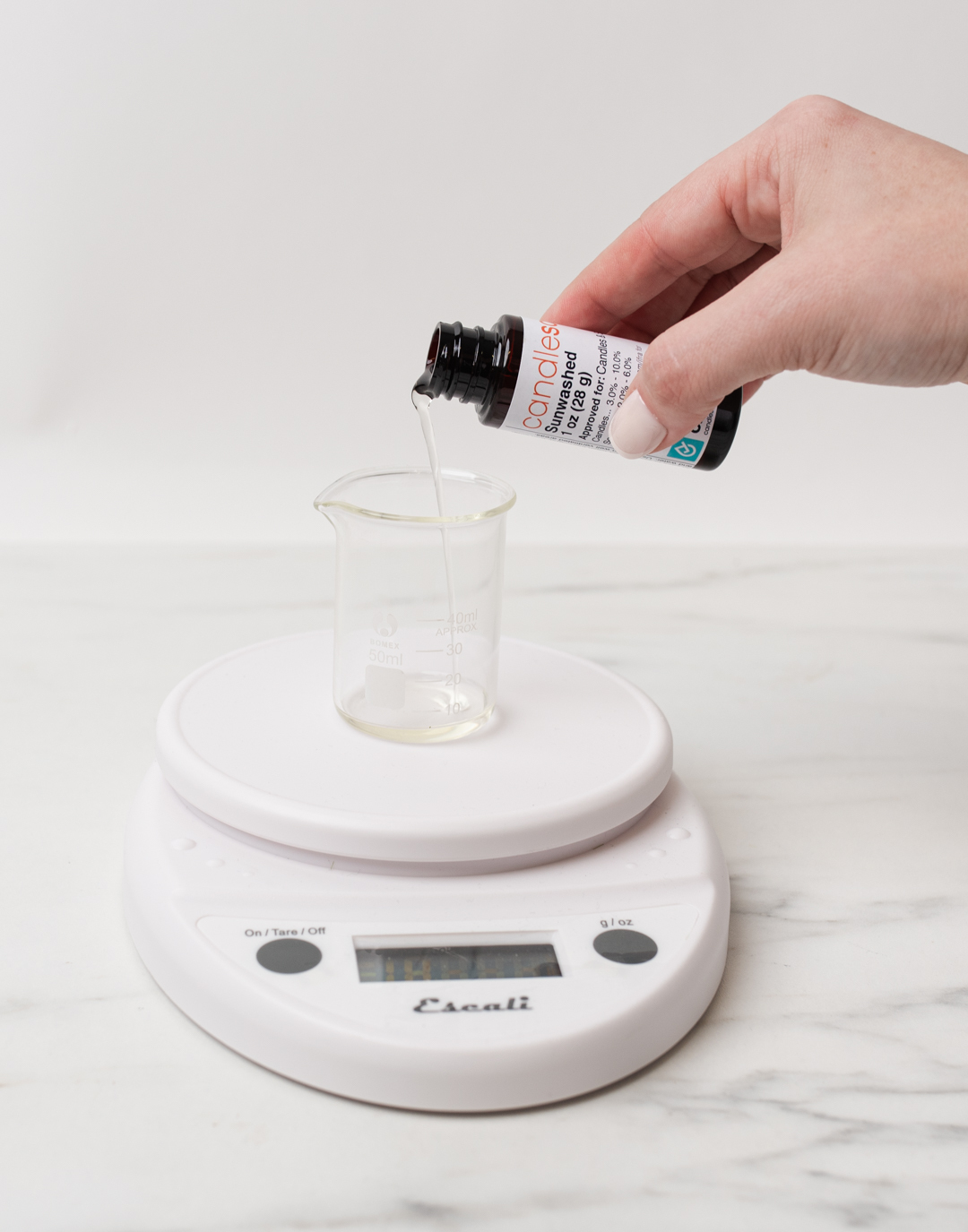
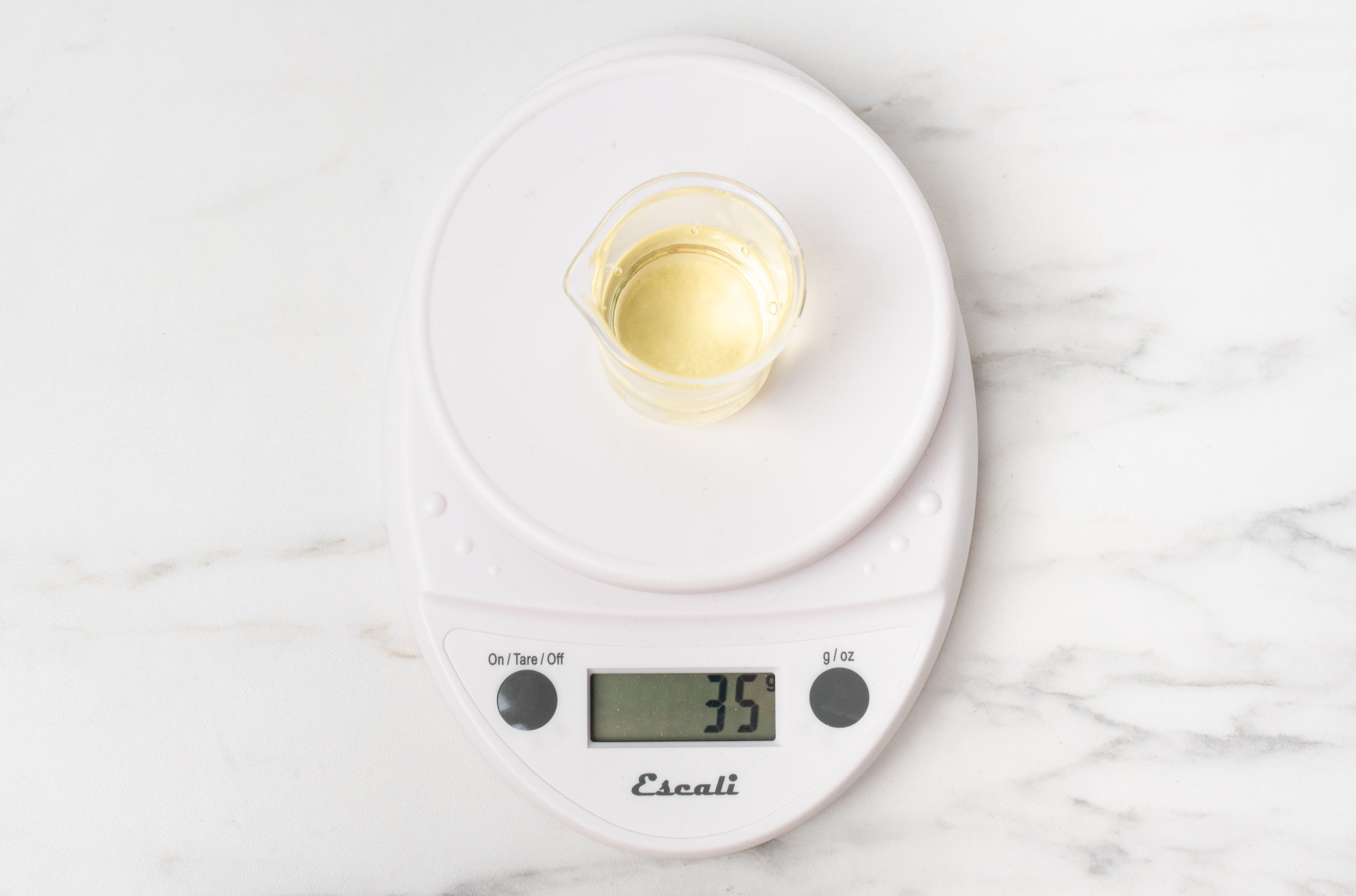
Step 5: Combine base and fragrance
Add your fragrance to your concentrated room spray base and mix thoroughly with a whisk or spatula until clear. This creates a new solution of fragrance and room spray base.
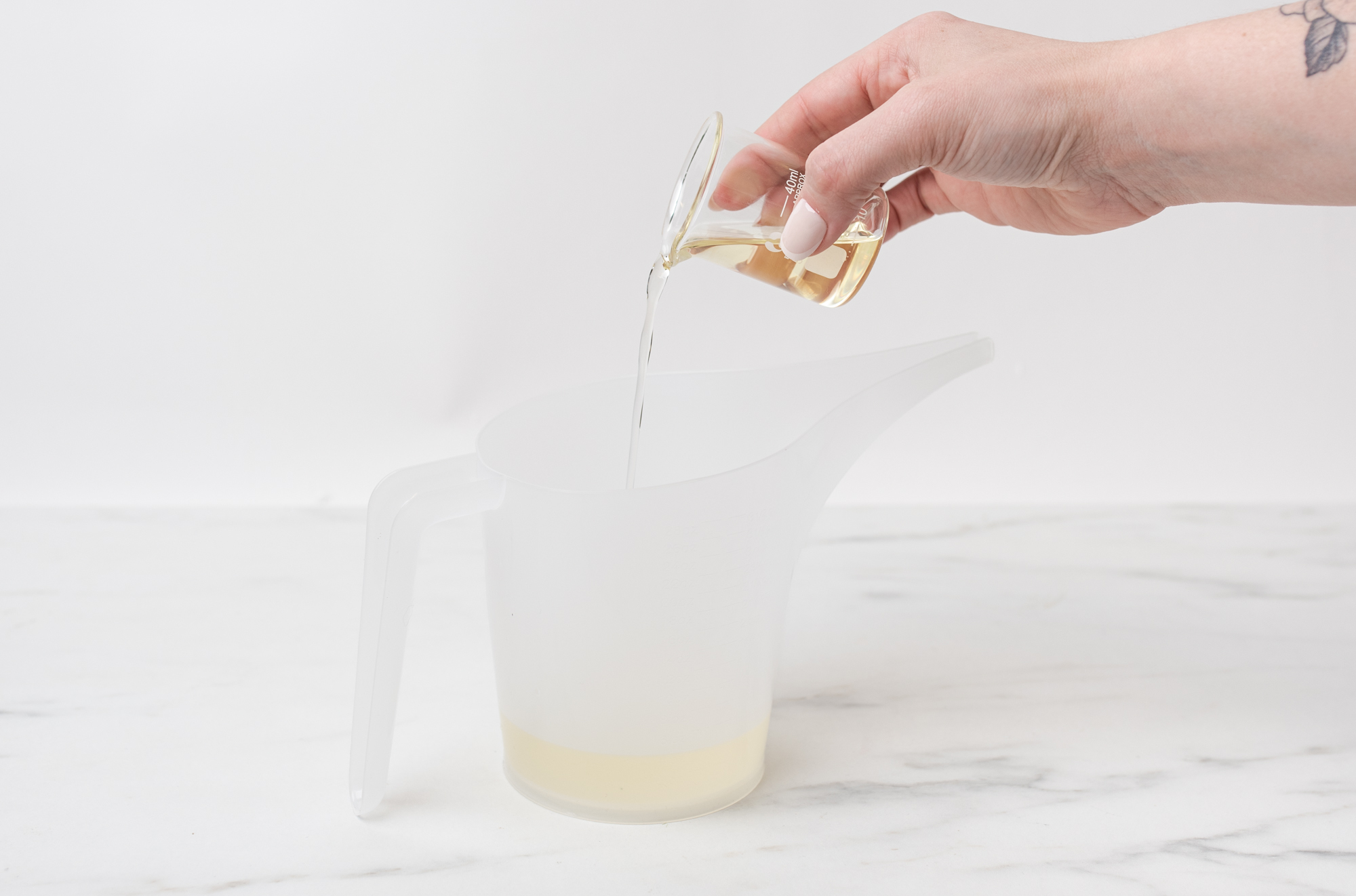
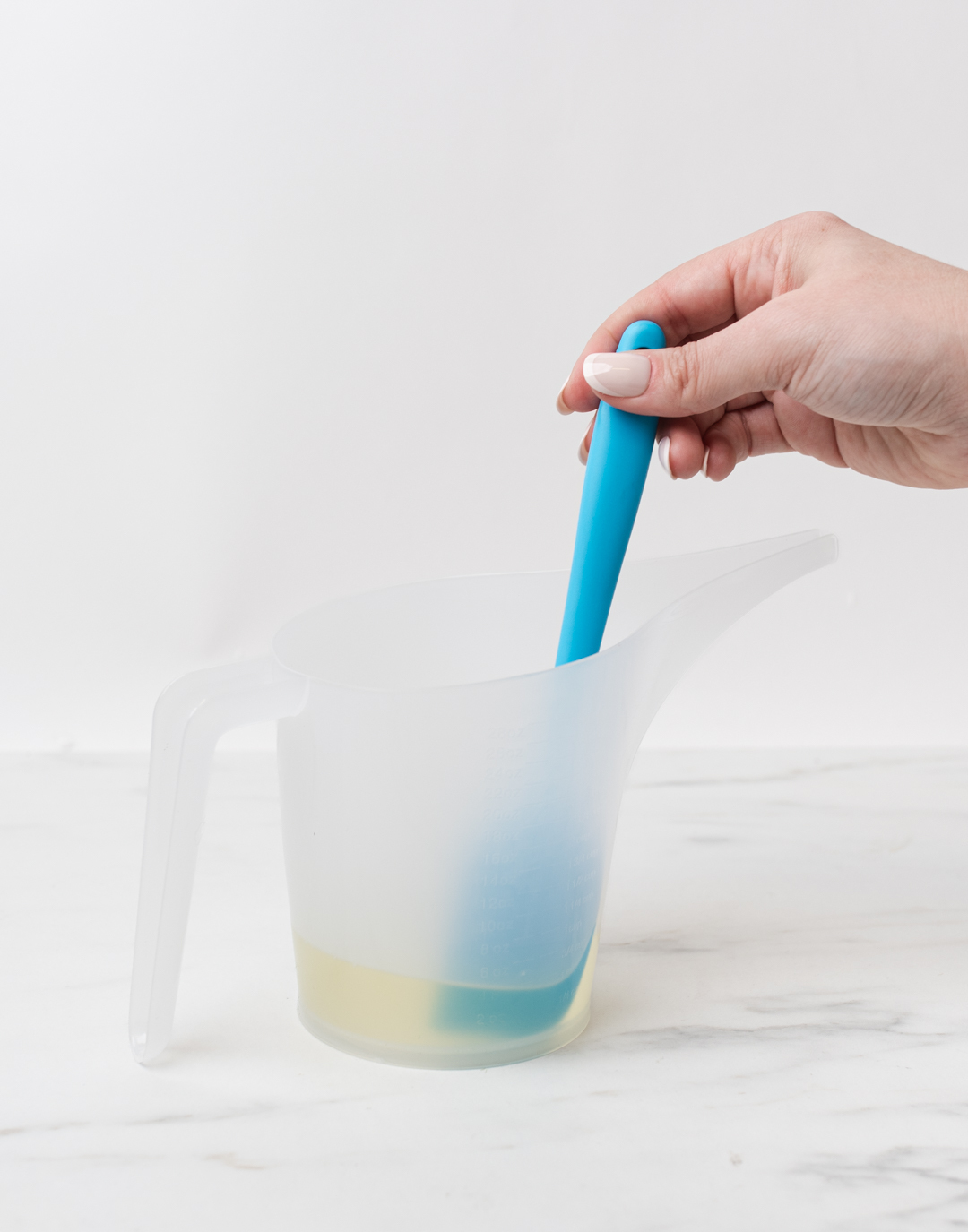
Step 6: Weigh water
Place a clean funnel pouring pitcher on your scale and press tare. Weigh 531 g of distilled or tap water.


Step 7: Combine solution and water
Add your water to your new solution (the room and linen spray base and fragrance oil) and mix thoroughly.
When combined, the final solution may appear cloudy, frothy, or tinted due to the color variations within fragrance oils—this is expected.

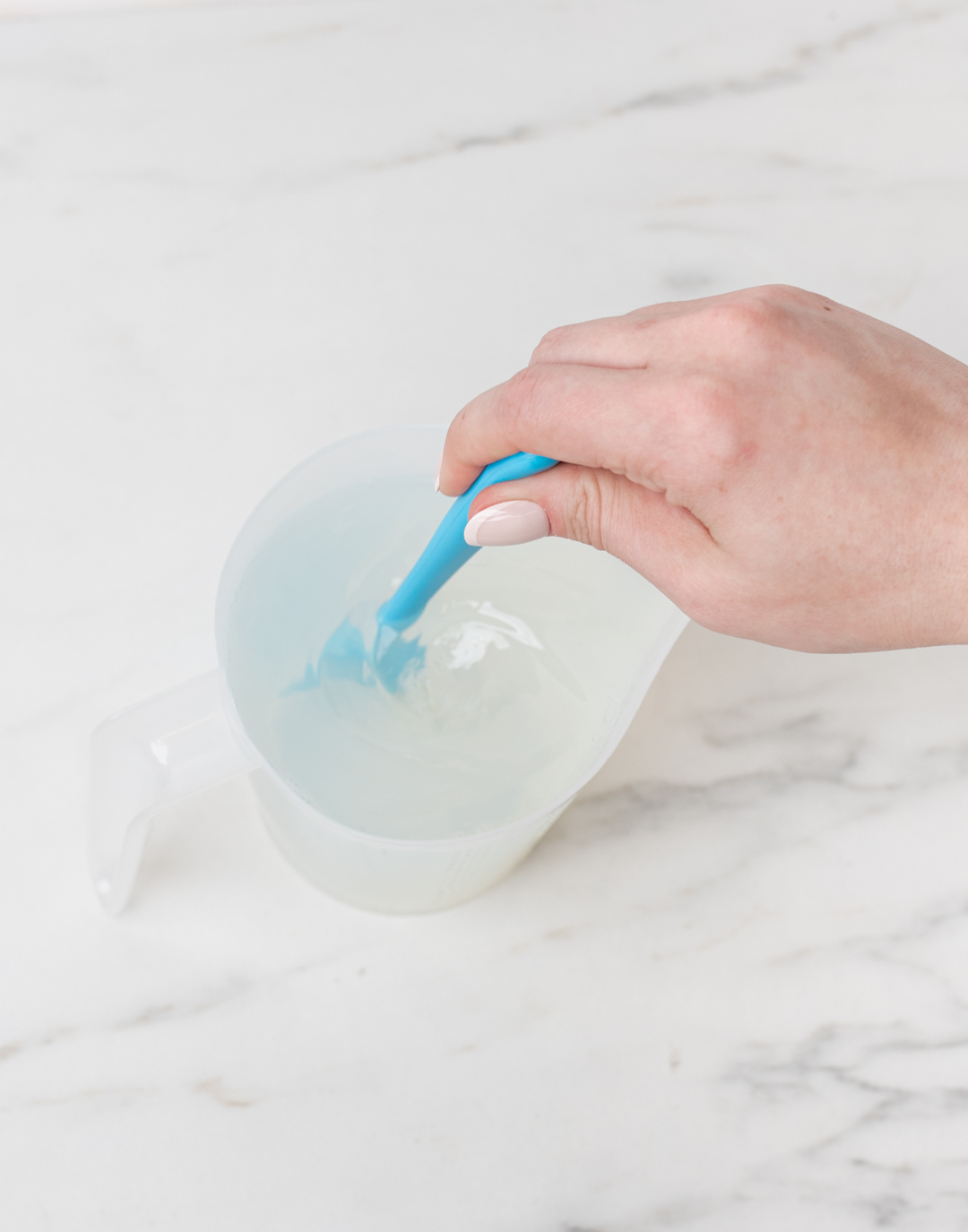
Step 8: Pour into room and linen spray bottles
Pour finished solution into each spray bottle. We recommend using a funnel pouring pitcher to measure 4 fl oz (118 ml) into each bottle. Then attach your White Fine Mist Sprayer (24mm-410).
Liquid products are sold in volume measurements (fluid oz and milliliters), so we recommend using a pouring pitcher or beaker to measure the exact amount into each bottle. Both containers have measurements on the container to show you fl oz and mL. Any excess space allows for the product to expand during warm weather shipping.
We recommend asking your customers to shake the bottle before each use.
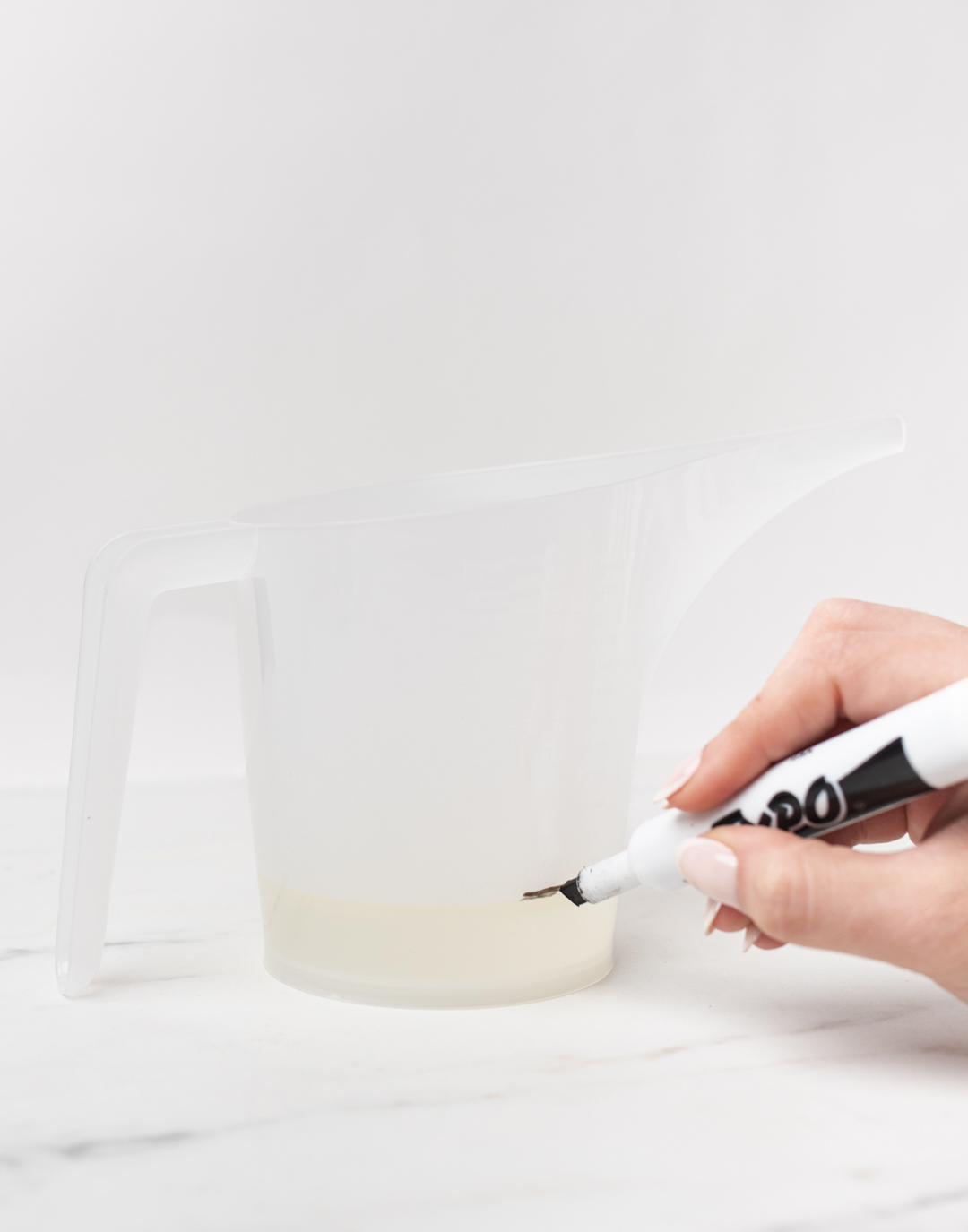
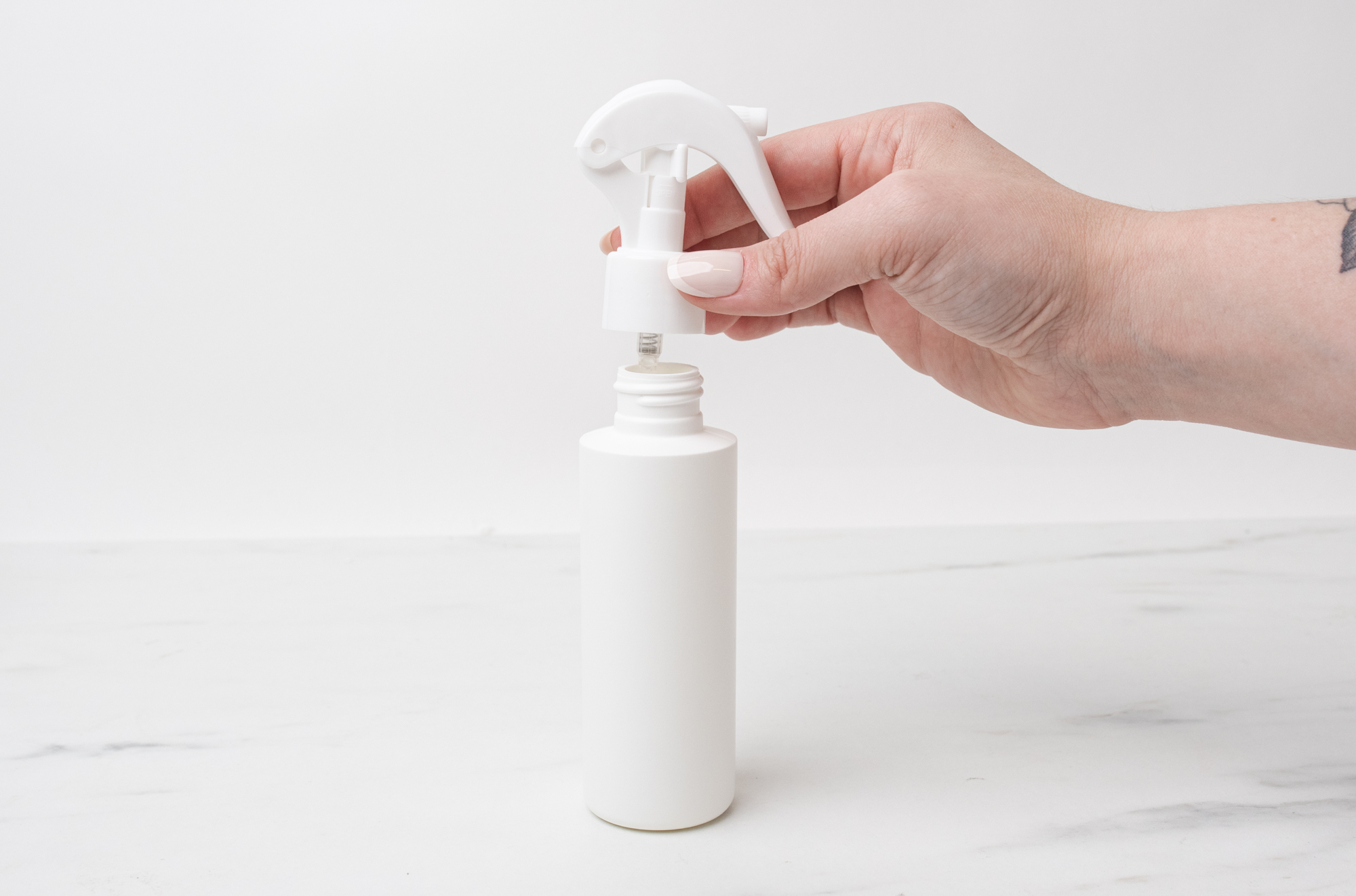
What now?
Ready to make a bigger batch of Room and Linen Spray? Check out A Beginner’s Guide to Scaling Room and Linen Spray!
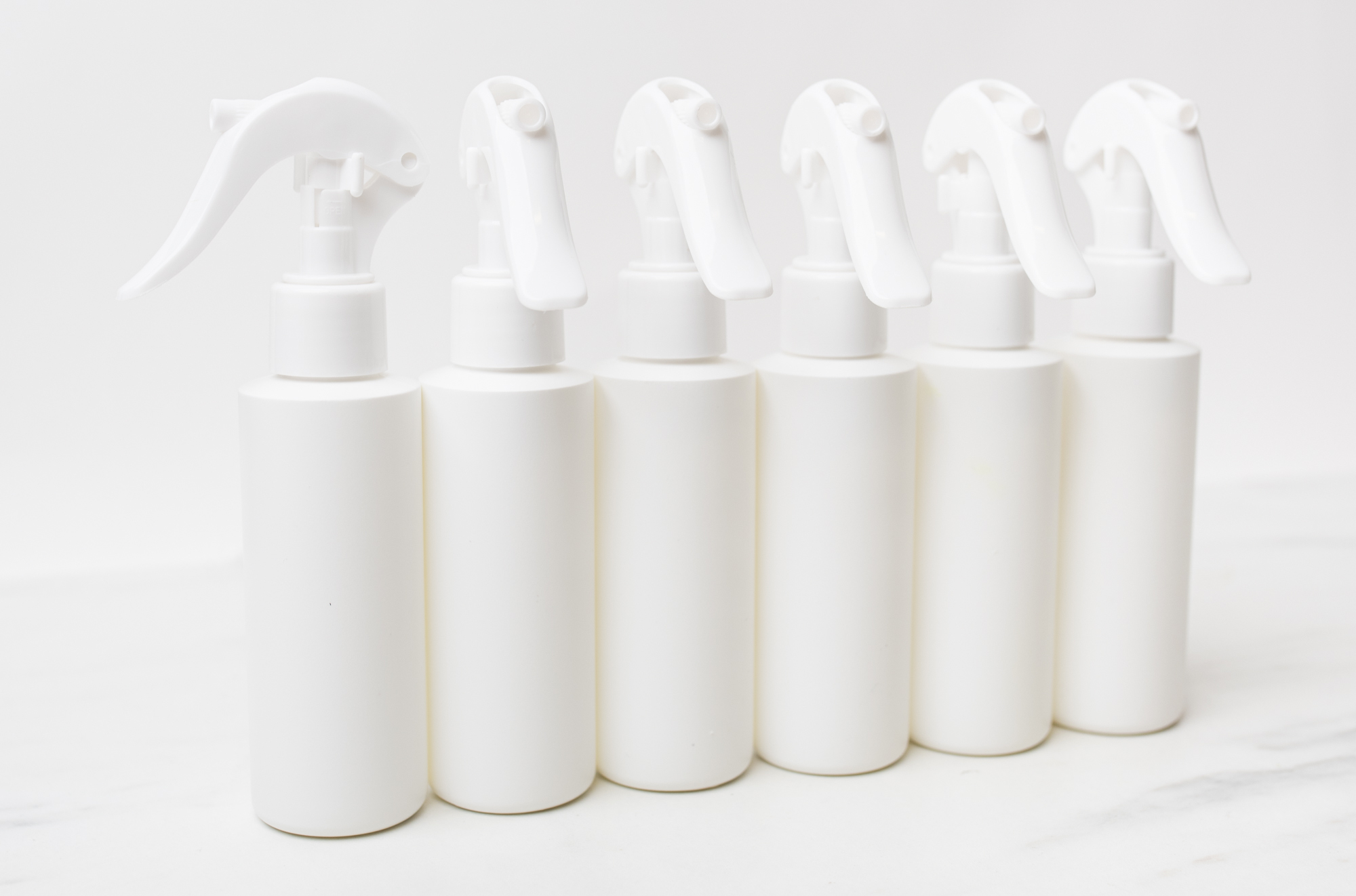
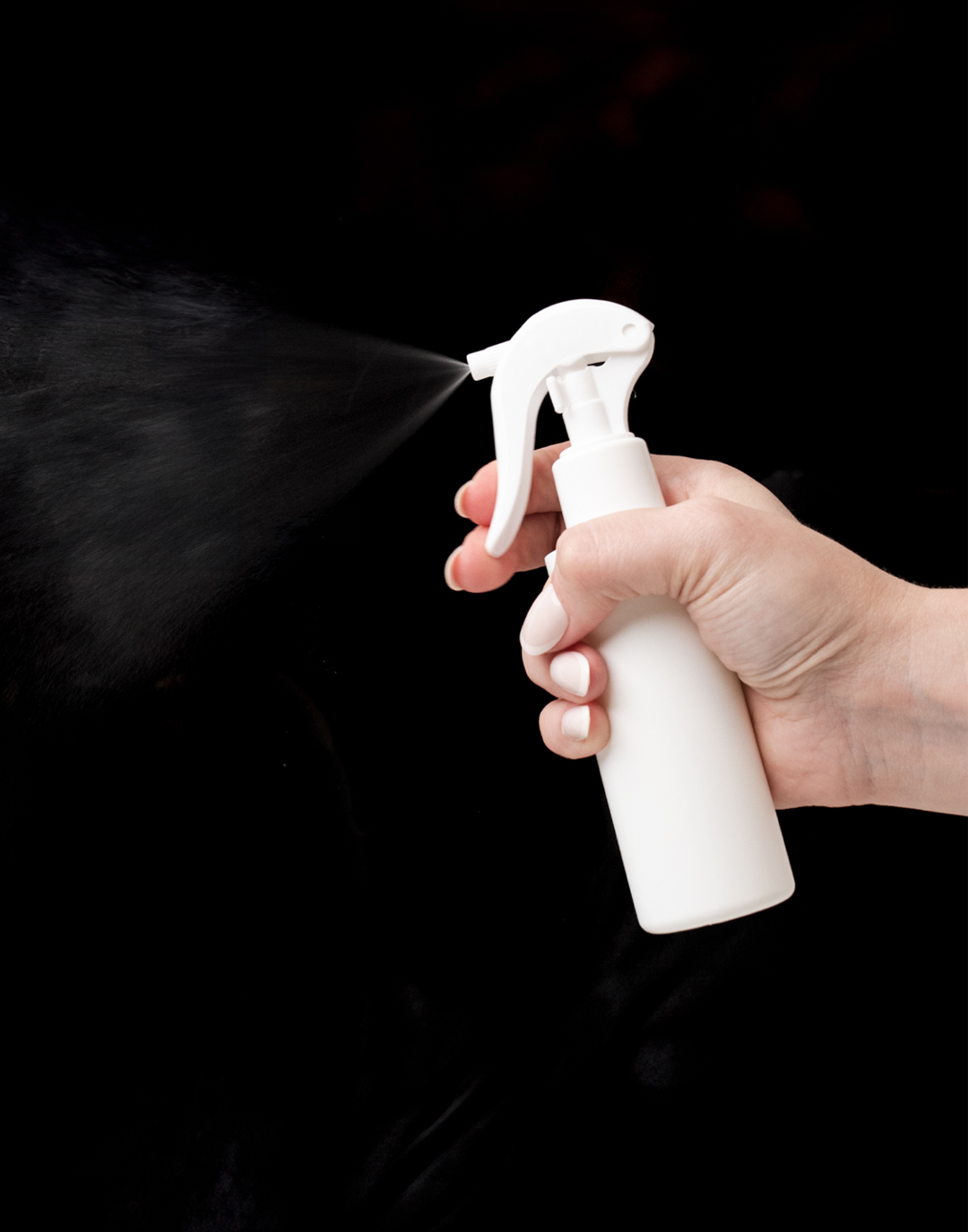
Show off your take on room and linen spray and all your handmade creations, with the CandleScience community by tagging us @CandleScience and using the #CandleScientist hashtag on Facebook and Instagram. We may feature you in our Stories or on our website!